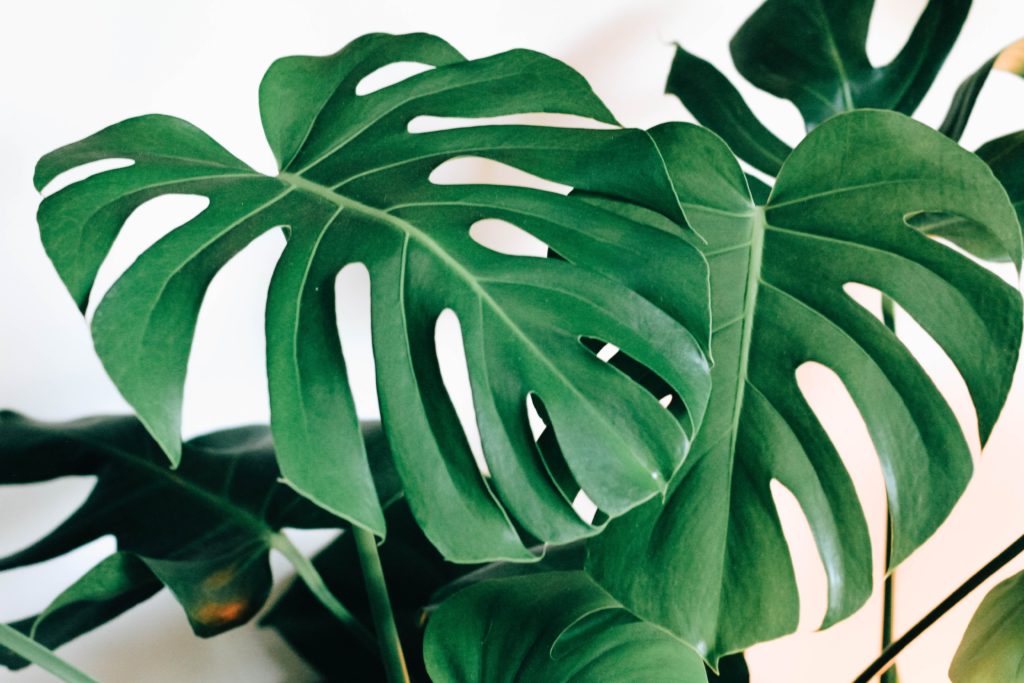The Swiss cheese plant, scientifically known as Monstera deliciosa, has become a household name in recent years, thanks to its explosive popularity on social media and mass availability at local nurseries worldwide. What sets this plant apart from others are the Monstera leaf fenestrations, which are natural holes or perforations that appear on the leaves. These fenestrations give the plant a distinct and exotic appearance, making it a favorite among plant enthusiasts.
But the Monstera leaf fenestrations are not just for show. They serve a functional purpose as well. The holes allow the plant to capture more sunlight and air, which is crucial for its growth and survival. Additionally, the fenestrations help the plant regulate its temperature and prevent water from accumulating on the leaves, reducing the risk of fungal infections.
In this article, we will delve into the various factors that contribute to the growth of Monstera leaf fenestrations and how you can encourage their development. Whether you are a seasoned plant parent or a beginner, this guide will equip you with all the information you need to grow your Monstera plant to its full potential.
Understanding the Anatomy of Monstera Leaves
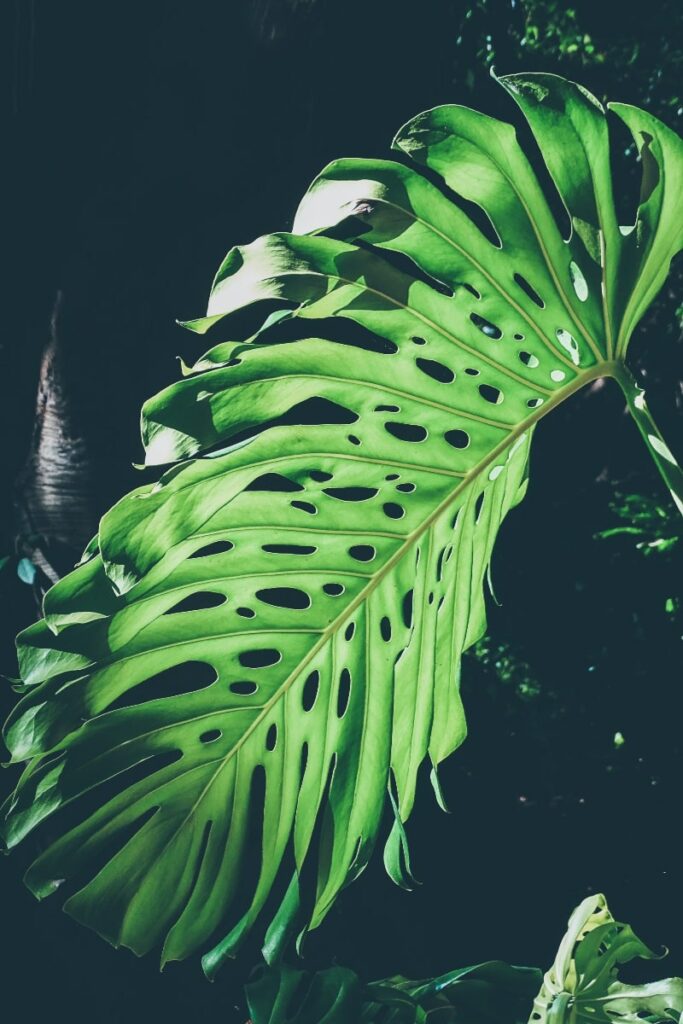
The anatomy of Monstera leaves is a complex and fascinating subject that requires a deep understanding of the plant’s structure. The Monstera deliciosa (and variants like the Thai Constellation and Albo) are tropical vines from Central and South America. They are best known for their leaves: large, glossy, and heart-shaped, with distinctive perforations and splits that give them their signature look.
To truly comprehend the anatomy of Monstera leaves, we must first examine the various parts that make up these unique plants. The blade, or main body of the leaf, is the flat, green portion that captures sunlight for photosynthesis. The petiole, or stem, attaches the blade to the main stem of the plant and provides support. The midrib is the central vein that runs down the center of the blade, branching out into smaller veins that distribute water and nutrients throughout the leaf.
It is the intricate structure of the Monstera leaf that allows for the development of fenestrations. As the plant grows, the midrib and smaller veins become thicker and stronger, creating a framework for the leaf to split and form holes. This process is believed to be an adaptation to the plant’s natural environment, allowing it to capture sunlight and rain while minimizing wind resistance.
But fenestrations are not just functional – they also add to the aesthetic appeal of Monstera plants. The intricate patterns and shapes created by the splits and holes make these plants a popular choice for interior design and home decor.
To truly appreciate the beauty of Monstera leaves, it is essential to understand their anatomy. With this knowledge, we can explore the techniques and tips for growing fenestrations on these unique and beautiful plants.
Factors Affecting Monstera Leaf Fenestrations
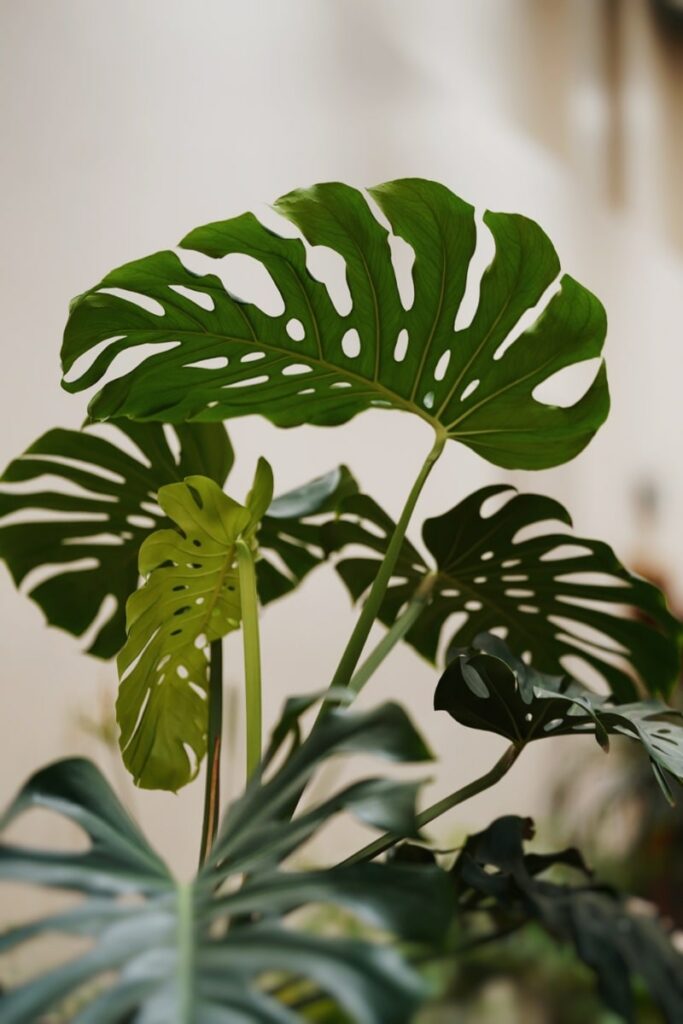
Monstera plants are renowned for their stunning and distinctive fenestrations, which are the natural holes or perforations in their leaves. These fenestrations are the result of a variety of factors that impact the growth and development of the plant. Here are some of the factors that can influence Monstera leaf fenestrations:
Age of the plant
As Monstera plants mature, they develop fenestrations. Younger plants may have smaller or no fenestrations, while older plants may have larger and more prominent ones. Young plants grown from seed or tissue culture likely will not have any fenestrations until it produces 7-9 leaves. However, cuttings taken from mature Monstera plants that have fenestrated leaves can produce new leaves with fenestrations immediately.
Proper Lighting Conditions
Most care guides tell you that Monstera plants require bright, indirect light to thrive. The reality is that these plants can take all of the indirect light you can provide from a sunny window while avoiding direct sunlight that may burn the plant. Fenestrations will only develop if the plant receives at least 6 hours of strong daily sunlight. Ideally, your Monstera should be placed near a west or south-facing window.
🌿 Our comprehensive Monstera lighting guide can help you create the perfect lighting conditions to promote new leaves and fenestrations.
Hight Humidity
Monstera plants prefer high humidity levels, which can help promote the development of larger and more defined fenestrations. Low humidity levels can result in smaller or less defined fenestrations. If you have a particularly dry room, a humidifier can add enough air moisture to recreate the rainforest-like environments these plants expect.
Soil quality
Monstera plants require well-draining soil that is rich in nutrients. Poor soil quality can result in stunted growth and smaller fenestrations. Ensure you are using a nutrient rich, well-draining soil to promote growth and health.
Watering Frequency
Overwatering or underwatering can both impact the development of Monstera leaf fenestrations. Overwatering can lead to root rot and stunted growth, while underwatering can cause the leaves to wilt and develop irregular fenestrations. Our Monstera watering guide breaks down the exact watering frequency and techniques to promote plant health.
Tips for Promoting Monstera Leaf Fenestrations
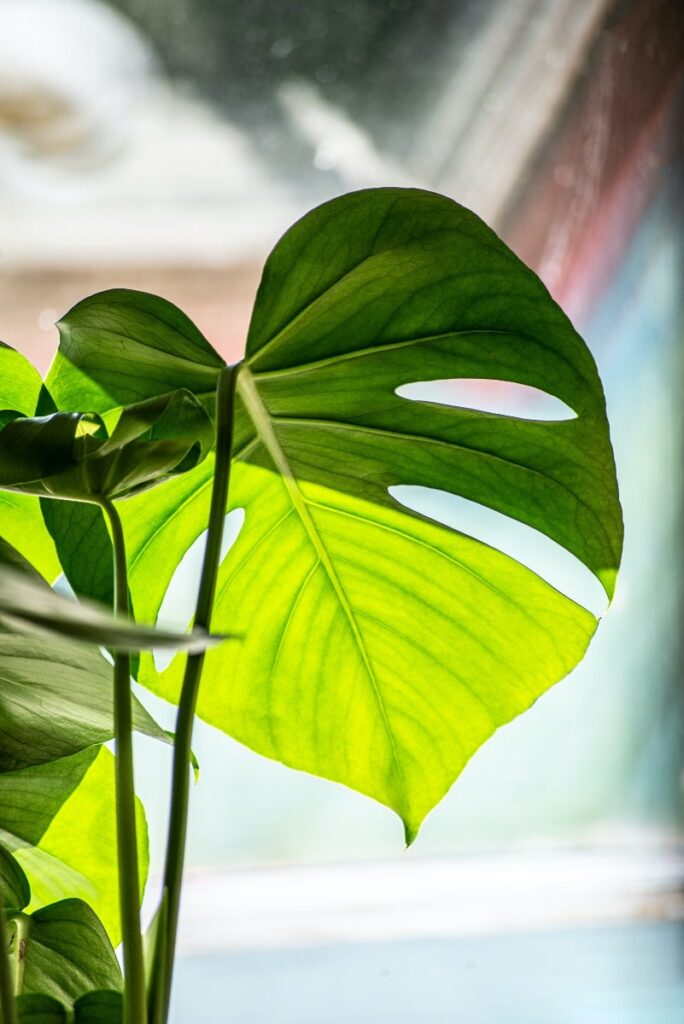
Monstera plants are renowned for their exceptional and stunning fenestrations, which are the natural holes or perforations that emerge in their leaves. These fenestrations not only enhance the plant’s aesthetic appeal but also aid in its survival in its natural habitat by allowing light and air to pass through the leaves. If you’re seeking to promote monstera leaf fenestrations, here are some tips to help you achieve the desired results:
1. Provide Adequate Light: Monstera plants require bright, indirect light to thrive. If your plant is not receiving enough light, it may not develop fenestrations. To ensure optimal growth, place your plant near a window that receives bright, indirect light, or use artificial grow lights to supplement natural light.
2. Maintain Proper Humidity: Monstera plants prefer high humidity levels, which can help promote the development of fenestrations. You can increase humidity levels by misting your plant regularly, placing a humidifier nearby, or grouping your plants together.
3. Water Properly: Overwatering or underwatering your monstera plant can affect its growth and development. To avoid this, make sure to water your plant when the top inch of soil feels dry to the touch, and avoid letting the soil become waterlogged.
4. Provide Adequate Nutrients: Monstera plants require regular fertilization to promote healthy growth and development. To ensure your plant receives the necessary nutrients, use a balanced fertilizer every two weeks during the growing season.
5. Prune Your Plant: Pruning your monstera plant can help promote the development of fenestrations. To do this, remove any dead or damaged leaves, and trim back any long stems to encourage new growth.
By following these tips, you can help promote the development of monstera leaf fenestrations and enjoy the unique beauty of this popular houseplant.
Common Mistakes to Avoid When Growing Monstera Leaf Fenestrations
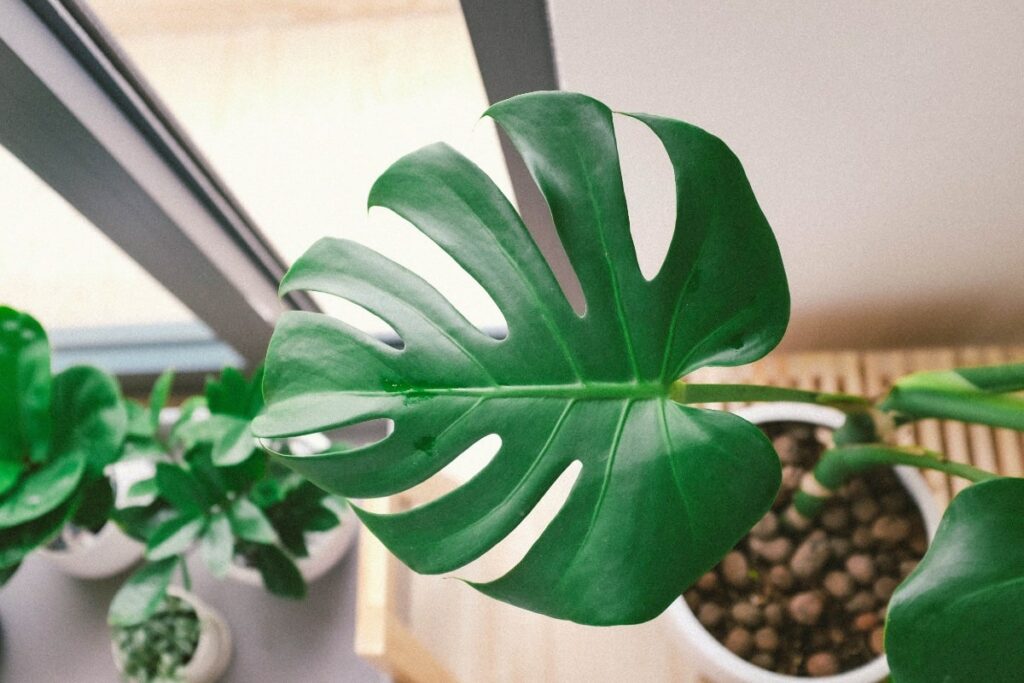
Growing Monstera leaf fenestrations can be a truly rewarding experience, but it’s important to steer clear of common mistakes that can impede their growth and development. Here are some mistakes to avoid when growing Monstera leaf fenestrations:
1. Overwatering: Monstera plants prefer soil that drains well and can be vulnerable to root rot if overwatered. It’s crucial to allow the soil to dry out slightly between waterings and to avoid leaving the plant in standing water.
2. Insufficient light: Monstera plants require bright, indirect light to thrive and develop fenestrations. If the plant isn’t receiving enough light, it may not produce new leaves or develop fenestrations.
3. Lack of support: Monstera plants are climbers and require support to grow upward. Without support, the plant may become leggy and not produce as many leaves or fenestrations.
4. Improper pruning: Pruning can help encourage new growth and fenestrations, but it’s important to do it correctly. Avoid cutting off too much of the plant at once and make sure to use clean, sharp tools to prevent damage.
5. Using the wrong fertilizer: Monstera plants require regular fertilization to promote growth and development. However, using the wrong type of fertilizer or applying too much can damage the plant and hinder fenestration growth.
By avoiding these common mistakes, you can help your Monstera plant grow healthy and produce beautiful fenestrations.
Troubleshooting Monstera Leaf Fenestrations
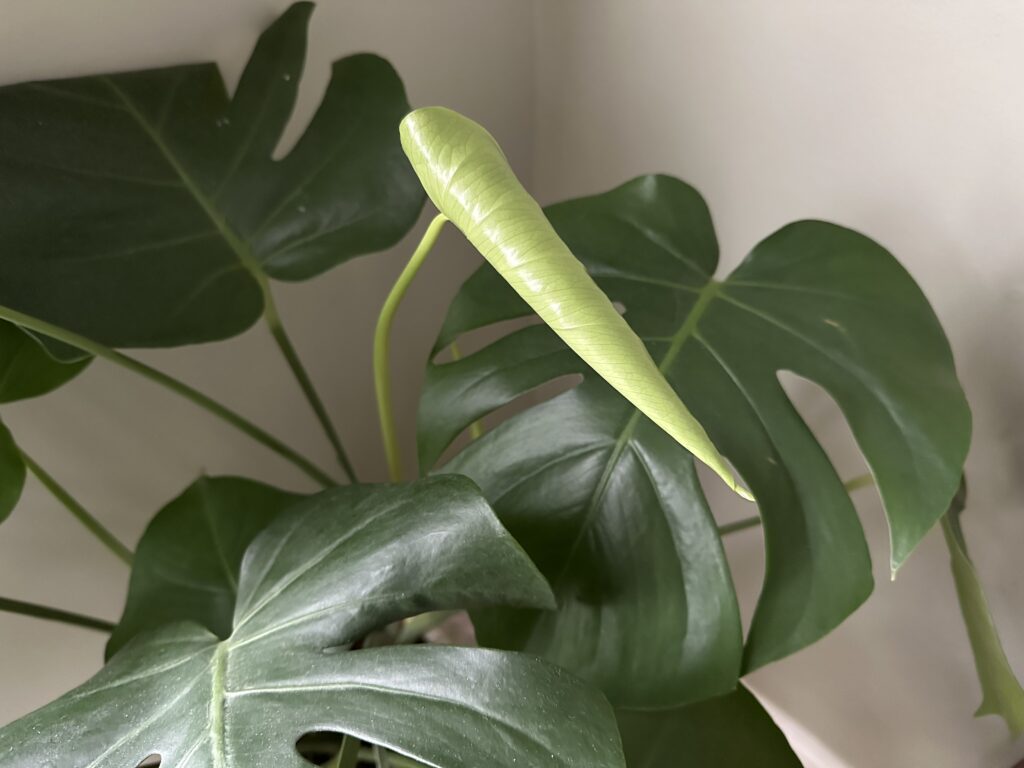
Monstera plants are generally easy to care for, but there are a few common issues that can arise when trying to encourage leaf fenestrations.
First, lack of light can be a major hindrance to fenestration production. Monstera plants require bright, indirect light to thrive. If your plant is not getting enough light, it may not produce the desired fenestrations. So, it’s important to move your plant to a brighter location or consider adding a grow light to provide the necessary light.
Second, overwatering can lead to root rot, which can cause the leaves to turn yellow and fall off. This can also prevent the plant from producing fenestrations. So, make sure to allow the soil to dry out slightly between waterings and avoid letting the plant sit in standing water.
On the other hand, underwatering can also be a problem. If your Monstera plant is not getting enough water, it may not produce fenestrations. So, make sure to water your plant regularly and keep the soil moist, but not waterlogged.
Additionally, lack of nutrients can also be a factor. Monstera plants require regular fertilization to thrive. If your plant is not getting enough nutrients, it may not produce the desired fenestrations. So, consider adding a balanced fertilizer to your watering routine.
Lastly, genetics can play a role in fenestration production. Not all Monstera plants will produce the same level of fenestrations. Some plants may simply be genetically predisposed to produce fewer or smaller fenestrations. So, if you’ve tried all of the above troubleshooting tips and are still not seeing the desired results, it may be time to accept that your plant’s genetics are simply not conducive to producing the desired fenestrations.
Conclusion and Final Thoughts on Growing Monstera Leaf Fenestrations
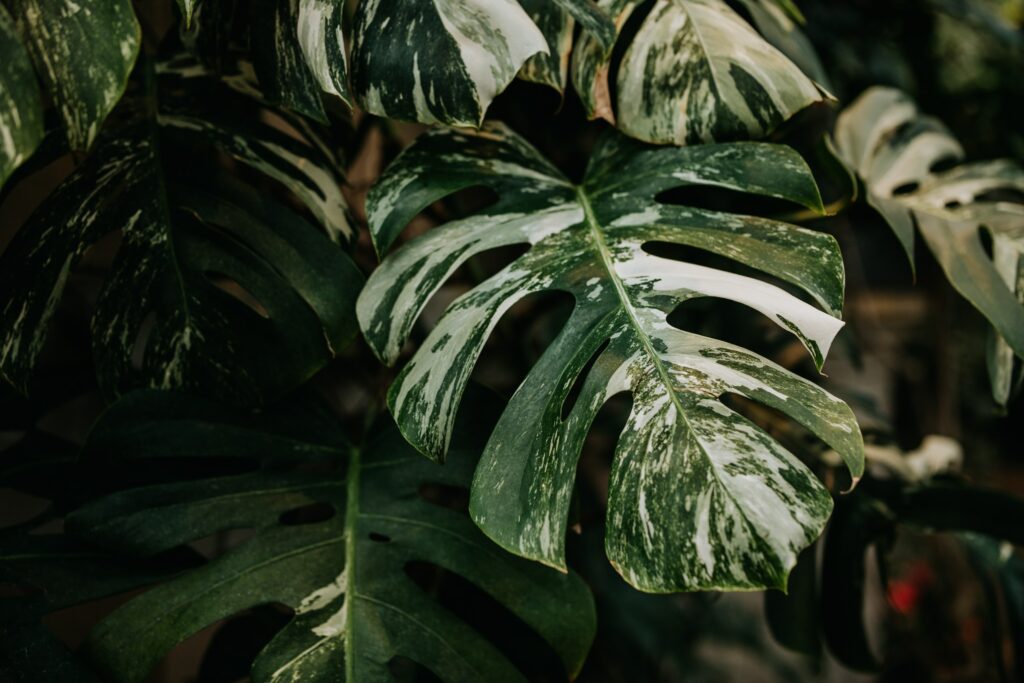
In the realm of plant enthusiasts, growing Monstera leaf fenestrations is a task that can bring immense satisfaction and excitement. The intricate and stunning leaves that develop as a result of proper care and attention are a sight to behold.
To ensure that your Monstera plant thrives, it is crucial to provide it with the right amount of light, water, and nutrients. This trifecta of care will ensure that your plant grows healthy and strong, allowing for the development of those coveted fenestrations.
However, it is important to note that patience is key when it comes to Monstera leaf fenestrations. These leaves can take several years to fully develop, so it is essential to allow your plant to grow at its own pace.
Despite the time investment, the process of growing Monstera leaf fenestrations is a fulfilling and enjoyable one. The unique touch that these plants can add to any indoor space is unparalleled, and with a little bit of effort and dedication, you can enjoy their beauty for years to come.
Frequently Asked Questions
What are Monstera leaf fenestrations?
Monstera leaf fenestrations are the natural holes or splits that appear in the leaves of the Monstera plant. These fenestrations are a characteristic feature of the Monstera plant and are highly sought after by plant enthusiasts.
How can I encourage my Monstera plant to grow fenestrations?
There are a few things you can do to encourage your Monstera plant to grow fenestrations. First, ensure that your plant is receiving enough light. Monstera plants thrive in bright, indirect light. Second, make sure that your plant is receiving enough water and nutrients. A healthy plant is more likely to produce fenestrations. Finally, consider providing your plant with a moss pole or trellis to climb. This will encourage your plant to grow larger leaves with more fenestrations.
Can I create fenestrations on my Monstera plant?
No, you cannot create fenestrations on your Monstera plant. Fenestrations are a natural characteristic of the Monstera plant and cannot be forced or created artificially. However, by following the tips mentioned above, you can encourage your plant to produce more fenestrations.
Why do some Monstera plants have more fenestrations than others?
The number of fenestrations on a Monstera plant can vary depending on a few factors. First, genetics play a role in the number of fenestrations a plant will have. Some Monstera plants are simply more predisposed to producing fenestrations than others. Second, environmental factors such as light, water, and nutrients can also impact the number of fenestrations a plant will have. A healthy plant that is receiving optimal growing conditions is more likely to produce more fenestrations.

